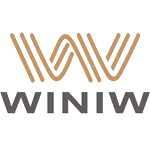The artificial leather industry is evolving at an unprecedented pace, fueled by a global push toward sustainability and technological breakthroughs. As consumers and industries seek alternatives to animal-derived and environmentally harmful materials, synthetic leather has emerged as a versatile solution. This article delves into the latest advancements, market shifts, and ethical considerations driving the sector, with a focus on eco-friendly innovations that are redefining its role in modern manufacturing.
---
Market Dynamics and Environmental Responsibility
The global artificial leather market is on track to surpass $23 billion by 2025, according to industry forecasts. Growth is propelled by rising demand in key regions such as Asia-Pacific, where countries like China dominate production and consumption. In 2022 alone, China’s synthetic leather output reached 167.65 million tons, driven by applications in automotive interiors, footwear, and furniture.
However, the industry faces mounting pressure to address environmental concerns. Traditional synthetic leather relies on petroleum-based polymers like PVC and PU, which contribute to pollution and landfill waste. In response, manufacturers are prioritizing biodegradable and plant-based alternatives. Materials derived from pineapple leaves (Piñatex), mushroom mycelium (Mylo), and apple peels are gaining traction, offering reduced carbon footprints and ethical appeal. These innovations align with global sustainability goals, such as the UN’s Fashion Industry Charter for Climate Action, which emphasizes decarbonization and circularity.
---
Technological Breakthroughs Enhancing Versatility
Recent advancements in material science are transforming artificial leather into a high-performance, multi-functional product:
1. Bio-Based Polyurethanes: Companies are developing PU leather using renewable resources like castor oil and cornstarch, reducing dependency on fossil fuels.
2. Recycled Materials: Post-consumer plastic waste and industrial byproducts are being repurposed to create synthetic leather, supporting circular economy models.
3. Smart Coatings: Innovations such as self-healing surfaces, temperature regulation, and water-resistant finishes are expanding applications in outdoor gear and tech accessories.
These technologies not only improve durability and aesthetics but also cater to niche markets. For instance, lab-grown leather alternatives are being explored for their potential to mimic exotic animal skins without ethical controversies.
---
Sustainability as a Market Differentiator
Consumer preferences are shifting toward ethical and transparent brands. A 2023 survey by McKinsey revealed that 67% of global consumers consider sustainability a key factor in purchasing decisions. This trend is reshaping the artificial leather industry:
- Certifications: Labels like PETA-Approved Vegan and Cradle-to-Cradle certifications help brands attract eco-conscious buyers.
- Transparency: Companies are adopting blockchain technology to trace supply chains, ensuring raw materials are sourced responsibly.
- Collaborations: Fashion giants like Stella McCartney and Adidas are partnering with material startups to launch cruelty-free collections, amplifying mainstream acceptance.
Regulatory frameworks are also accelerating change. The European Union’s Circular Economy Action Plan and bans on single-use plastics are pushing manufacturers to adopt greener practices.
---
Emerging Applications Driving Growth
While traditional sectors remain vital, new opportunities are emerging:
1. Automotive Industry: Electric vehicle (EV) manufacturers prioritize lightweight, sustainable materials for interiors. Synthetic leather’s durability and ease of cleaning make it ideal for seats and dashboards.
2. Architecture and Interior Design: Fire-resistant and UV-stable synthetic leather is being used in commercial spaces for upholstery and wall coverings.
3. Healthcare: Antimicrobial synthetic leather is gaining popularity for medical equipment covers and hospital furniture due to its hygienic properties.
Emerging markets in Africa and Southeast Asia also present untapped potential, driven by urbanization and rising middle-class demand for affordable luxury.
---
Challenges and the Path Forward
Despite progress, the industry faces obstacles:
- Cost Competitiveness: Eco-friendly materials often require costly R&D and production processes, limiting accessibility in price-sensitive markets.
- Consumer Education: Many buyers still associate synthetic leather with lower quality, necessitating campaigns to highlight its premium and sustainable attributes.
- Supply Chain Resilience: Geopolitical tensions and raw material shortages underscore the need for diversified sourcing strategies.
To overcome these challenges, stakeholders must invest in scalable green technologies, collaborate with policymakers, and leverage digital tools like AI for efficient resource management.
---
Conclusion
The artificial leather industry is no longer merely an alternative to traditional leather but a pioneer in sustainable innovation. By embracing bio-based materials, circular practices, and cutting-edge technologies, the sector is poised to meet the demands of a rapidly changing world. For businesses, aligning with these trends offers a competitive edge in a market increasingly defined by environmental responsibility and ethical consumption.
As the industry continues to evolve, its success will hinge on balancing performance, affordability, and planetary health—a challenge that promises to unlock transformative opportunities for years to come.

 EN
EN








































